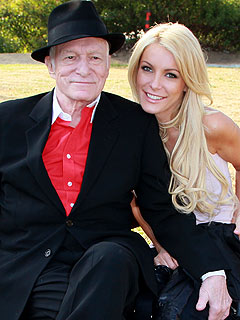So far, only this awful truth is clear: Jenni Rivera, one of the most celebrated artists in the Latin world, died when her private jet effectively stopped in midair. The plane plummeted nose-first, 28,000 feet in 30 seconds, leaving its wreckage — and the remains of Rivera and six others — splayed across the side of the mountain like a wash of pebbles.
The investigation at the remote Mexican crash site is now in full swing, and authorities have not said whether they suspect maintenance problems or pilot error. But scrutiny has fallen over the plane and its pilots, one of whom was 78 years old. Interviews and documents have linked the jet to a troubled company — and an executive who was once imprisoned for faking the safety records of planes he bought from the Mexican government and sold to private pilots in the United States.
According to federal aviation records, the Learjet 25 carrying Rivera from a performance in Monterrey, Mexico, was built in 1969 and was owned by a Las Vegas company called Starwood Management LLC.
A Starwood executive, Christian E. Esquino Nunez, was accused of conspiring with associates in the 1990s and 2000s to falsify records documenting the history of planes they bought and sold — tail numbers, inspection stamps and logbooks. Esquino's "fraudulent business practices ... put the flying public at risk," federal authorities argued in documents obtained by The Times.
"We had a forewarning that this is what he is," Timothy D. Coughlin, an assistant U.S. attorney in San Diego, said. "Essentially they would manufacture the records ... that would indicate that maintenance was up to date. They would create them out of whole cloth." Once Esquino brought the planes across the border for sale, "it was open season," Coughlin said.
Coughlin prosecuted the case against Esquino in 2005, resulting in a guilty plea that sent Esquino to a federal prison in Lompoc, Calif., for two years. After his release from prison, Esquino was deported from Southern California to his native Mexico, where he lives today.
For 20 years, Esquino has been embroiled in a briar of legal allegations, many involving airplanes — a bankruptcy and a restraining order, criminal indictments and civil judgments, cocaine-distribution charges, even a role in an alleged conspiracy to airlift relatives of the late Moammar Kadafi out of Libya.
On Wednesday, in his first public comments since the crash, Esquino told The Times by telephone from Mexico City that the flight was not a charter as authorities have said. Rather, Rivera was in the final stages of buying the plane from Starwood for $250,000; the flight was offered as a free "demo."
Esquino, 50, described himself as Starwood's operations manager, and said he understands why his past would place him under scrutiny in the wake of the accident.
"Obviously my past — there is a story to it," he said. "It's unavoidable that they are going to look at my past.... I think it's fair to bring it up right now and question it."
However, he said, the jet was perfectly maintained. He said the only conceivable explanation for the crash was that pilot Miguel Perez Soto suffered a heart attack or was incapacitated in some way, and that a younger co-pilot, Alejandro Torres, was unable to save the plane. (Authorities stressed they have not determined a cause of the crash or whether the plane had any problems.)
"We're all grieving," Esquino said. "I'm definitely very sorry that this happened."
Esquino said it was not a mistake to put a 78-year-old pilot at the helm of the flight. Perez had a valid license to fly in Mexico, authorities said Wednesday, but U.S. aviation sources said that in the United States, Perez was licensed to fly only under conditions that don't require the use of instruments and was not allowed to carry passengers for hire.
Esquino said he had known and trusted Perez for 30 years. "I couldn't think of anyone more qualified," he said.
Rivera, 43, a famed Mexican American performer, mother of five and master of a growing international business empire, was killed Sunday when the private jet carrying her and four members of her entourage crashed near Iturbide, Mexico. Rivera had sold 20 million albums, lived in a massive estate in Encino, was preparing to make her American network television debut and was at the height of her career.
The same plane, according to U.S. aviation records, sustained "substantial" damage in 2005 when a fuel imbalance left one wing tip weighing as much as 300 pounds more than the other. The unnamed pilot, despite having logged more than 7,000 hours in the air, lost control while landing in Amarillo, Texas, and struck a runway distance marker. No one was injured.
Esquino called that accident "minor" and said the plane had flown without issue for 1,000 hours since then.
Starwood formed in March 2007, two months after Esquino was released from prison. He probably knew, federal officials said Wednesday, that he would be unable to receive a license to buy and sell U.S.-registered aircraft following the federal charges and his deportation.
Nevada employment records list Esquino's sister-in-law, Norma Gonzalez, as the sole corporate officer of Starwood. But according to allegations contained in court documents, it was Esquino — who has operated at times under the name Eduardo "Ed" Nunez — who was actually running the show.
According to a lawsuit filed in October in Nevada by an aviation insurance firm, Esquino is the "alter ego" of Starwood and had signed numerous documents on behalf of Starwood, including applications for insurance.












